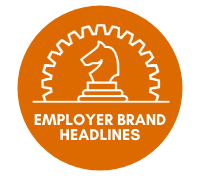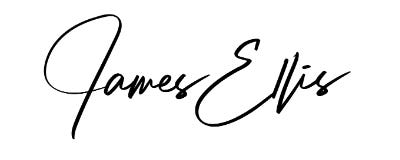Employer Brand Headlines: The "Absolute Beginners" Edition (#60)

In this edition:
Democratization of brands
Pushing beyond the usual
Building the next normal
What are your KPIs really measuring?
No more intake meetings?
The Big Idea
Employer brand seems to be going through a period of democratization: more companies are bringing EB folks on board and espousing the value of you talent branding. More tools, more tactics, more places to tell our story.
But there are two competing issues here: as we democratize the brands, as we make them easy to build out, easy to find, easy to digest, to whom are we trying to talk to? Are we making our story too easy to find?
There’s so much evidence that says that people don’t value the things that are easy to find and get. Luxury brands thrive because those items are hard to find and hard to attain. The highest end brands literally destroy over-run product to ensure that prices stay high.
Luxury brands are luxury because of what we believe they tell others about ourselves. What do people thing about us because we found those limited edition kicks? More to the point, what do we want others to think about us because of them?
Brands are identity.
And here we are, pushing our brand to anyone and everyone who will listen. Are we over-democratizing our brands to death? We only have so many roles to fill, so why do we need a million candidates want to work for us?
Democracy is great, but how democratic does your brand really need to be?
On to the Headlines
Bryan Adams kicks his article off by saying, “talent acquisition professionals and employer brand leaders can often fall victim to an over-reliance on conventional thinking” so you knew I was going to mention this one. His call is to go beyond “typical employer branding” is music to my ears. It’s a call to stop being passive, to stop just focusing on polishing up and providing the “nicest” face on the company and taking a more active role in shaping the brand. Don’t tell stories, make stories. Love it.
Everything changed six months ago. And so we adjusted. But has it felt like we’ve built for a new future, or just build enough to “get through this?” I would bet most of you would see it as the latter. Which is too bad. Because it may never come back. It may never come back in the same way. So rather than wait until we can “go back to the way it was,” this is your time to reinvent from the ground up. It is time to take the chaos all around us (and it isn’t any less chaotic, we’ve just built a callus to things lately) and build the “next normal,” not the new one.
In the similar vein, you can be helping your people not just “survive” things, but finding ways to get better because of the crisis. (Book recommendation: Antifragile by Nassim Nicholas Taleb. Personally, I think Black Swan is a better book, and I can’t listen to him on Twitter, but this really is the best possible thing to read when things just feel nuts.)
Two HBR articles in a row?! Goodness. But this one was so good, I had to share. Next time someone starts dropping metrics and KPIs on you to start to measure up to, pull this out and treat it like a checklist: Who else is involved in making this KPI go up or down? What really causes the number to go up and down (remember, correlation is not causation*), and how much control do YOU have other it? And metrics are a two-way street, a relationship between the organization and the market.
What are people looking for in a video these days of indefinite uncertainty? Positivity, exploring new ideas and difficult issues, and simply engaging with things that feel timely, according to Google.
Look, this is something I am grappling with because I really want employer branders to think… deeper. It’s not just putting out little videos and polishing up career sites, but helping leadership think better about their brand. One of the ideas I haven’t gotten my arms around but think is special is the concept of cognitive dissonance. We want what we want, but what we want might not align with our stated values. A company who can help its customers overcome that cognitive dissonance is one who can win a long time customer. Like i said, I’m not sure how we can use this idea, but I’ve been thinking about it a lot. Start by reading Cognitive Dissonance Dissonance For Purpose Brands and The Cognitive Dissonance Hiding in Strong Brands.
Quick Hits
Six brand case studies that proved the value of storytelling
How to Build a Brand Through Live Streaming [+ Examples]
EB Tip Of The Week
Want to make friends with your recruiters? Suggest that they rename their “intake meetings” as “Talent strategy meeting” when they book time with their hiring managers. It elevates the meeting and the recruiter in the eyes of the hiring manager (trust me, I have the receipts).
Podcast guesting
I know! I haven’t been talking into your ears for a few weeks (I promise, things are in the works!), so if you missed me, take a listen to me talking on The Changing State of Talent Acquisition podcast.
Thanks, everyone!
The mission of this whole thing is to help you get better at employer branding, so if you have questions or want me to consider other articles, just let me know (reply to this email and it comes straight to me).
Cheers!
-James Ellis (LinkedIn | Twitter | Podcast | Articles)


I tried to write the best book ever written on employer branding. I don’t know if I completely succeeded, but for 99 cents, you can decide for yourself.
By James Ellis, Employer Brand Nerd
In a sea of content, how do you stay up to date on employer branding news? How do you know what's worth reading and what's just a waste of time?
So glad you asked! Here's a weekly digest of the best content to make you smarter about employer branding, curated by James Ellis.
In order to unsubscribe, click here.
If you were forwarded this newsletter and you like it, you can subscribe here.
Powered by Revue
James Ellis, 421 W Melrose, Chicago, IL 60657




